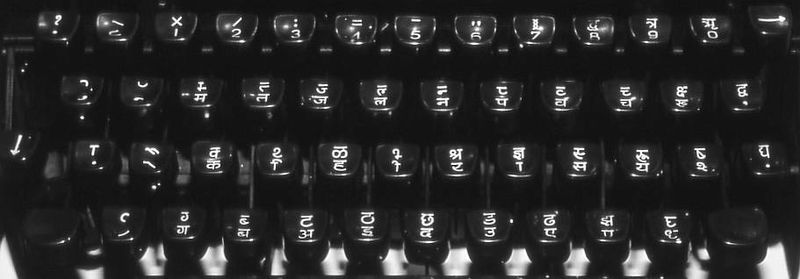Iscii Devanagari Font For Linux

FAQ - Indic Scripts and Languages Indic Scripts and Languages • • • • • • • • • • • • • • • • • • • Q: What is ISCII? A: Indian Standard Code for Information Interchange (ISCII) is the character code for Indian languages that originate from Brahmi script. ISCII was evolved by a standardization committee under the Department of Electronics during 1986-88, and adopted by the Bureau of Indian Standards (BIS) in 1991.
Sanskrit and the Open Source World. Fluid Mechanics 5th Edition Kundu. From the Mundaka Upanishad written in LibreOffice Writer with the Lohit Devanagari font. BOSS is an Indian GNU/Linux. This is partly due to the need for some Apple fonts to be backwards compatible with older documents. Third Party Fonts. When selecting a font, you must look for a Unicode encoded font in the Open Type (OTF) format. Read pages for instructions on whether it is Windows compliant or Linux compliant. Note on OS X: These fonts can be installed on a Mac, but vowel marks may not display correctly.
Unlike Unicode, ISCII is an 8-bit encoding that uses escape sequences to announce the particular Indic script represented by a following coded character sequence. The ISCII document is IS, available from the BIS offices. The ISCII Standard can be found on the web, for example.
Q: How does Unicode differ from ISCII? A: Except for a few minor differences, they correspond directly. Unicode is designed to be a multilingual encoding that requires no escape sequences or switching between scripts. For any given Indic script, the consonant and vowel letter codes of Unicode are based on ISCII. ISCII allowed control over character formation by combining letters with the characters NUKTA, INV, and HALANT.
Unicode provides similar control with the ZWJ and ZWNJ characters. The prototypical example is the 'explicit halant': ISCII: Halant + Halant Unicode: Halant + ZWNJ The 'soft halant' of ISCII is expressed: ISCII: Halant + Nukta Unicode: Halant + ZWJ The 'explicit halant' is discussed in the ISCII standard, section 6.3.1 and 'soft halant' is discussed in 6.3.2. There are several categories of such differences.
See also Chapter 12, in The Unicode Standard for details. Unicode also includes the right side 'pieces' of some two-part vowel signs for compatibility with some software. For more on vowel pieces, see.
The ISCII Attribute code (ATR) is not represented in the Unicode Standard, which is a plain text standard. The ISCII Attribute code is intended to explicitly define a font attribute applicable to following characters, and thus represents an embedded control for the kinds of font and style information which is not carried in a plain text encoding. The ISCII Extension code (EXT) is also not represented directly in the Unicode Standard. The Extension code is an escape mechanism, allowing the 8-bit ISCII standard to define an extended repertoire via an escaped reencoding of certain byte values.
Hp Elitebook 8560w Drivers Fingerprint Card there. Such a mechanism is not required in the Unicode Standard, which simply uses additional code points to encode any additional character repertoire. Q: Unicode doesn't have an 'invisible letter' (INV) like ISCII. How can I form the combinations that use INV in ISCII?
A: There are four uses of nukta in ISCII. Unicode only uses the first two. Unicode doesn't use nukta for soft halant and doesn't use it for code extension. Unicode does use nukta to represent the nukta diacritic either in cases such as 'ka' U+0958 or cases like 'nnna' U+0929. Unicode doesn't use nukta for the 'om' character (eg. Chandrabindu + nukta in ISCII, which is encode as a separate character in Unicode). One other use of INV in ISCII is as a base letter, this may be expressed with a space or no-break space in Unicode, depending on whether the result is to be a 'word-like' character or not: ISCII Unicode INV + vowel-sign SPACE + vowel-sign INV + vowel-sign NBSP + vowel-sign Q: Is India involved in Unicode?